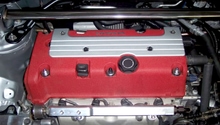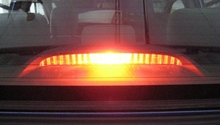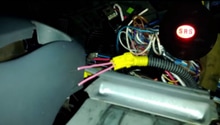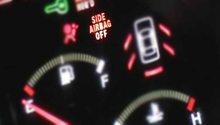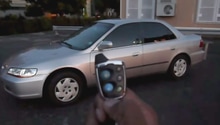Honda: Warning Lights
Warning lights tell the driver that something isn't right with the car. Learn what each light means and what you need to be aware of.
This article applies to the Honda Civic and Accord (1992-2000).
Both the Honda Civic and Accord are equipped with a pretty standard set of dashboard warning lights. These lights serve mainly as alerts to things malfunctioning in your vehicle. Knowing what they mean is the difference between imminent danger and a potential issue. Typically, warning lights that are red colored are immediate issues, while yellow or orange lights mean a trip to the mechanic will be necessary soon.

Figure 1. Honda Accord instrument panel. 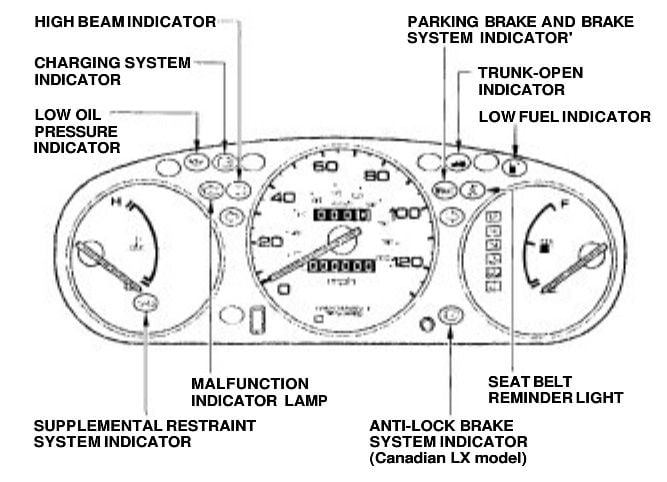
Figure 2. Honda Civic instrument panel.
Parking Brake
This symbol just means that the parking brake is engaged. If the parking brake is not engaged and the light is still on, this is an indication that there's another malfunction in the braking system. Likely, the brake fluid reservoir is low.

Anti-Lock Brake System
When the ABS is active, the light should come on during heavy braking. Other than that, it should only be lit when the ignition is on. If the light is on during normal driving conditions, there's something wrong with the ABS system. A failing vehicle speed sensor triggers this warning light.

Charging System
If the battery light is on, that means the battery is carrying a low charge or isn't charging properly. Corroded battery terminals—as well as dead or dying batteries—can trigger this warning light.

Low Oil Pressure
This symbol means that the oil pressure is low in a serious way. Should this light come on, it's a good idea to pull over and shut the car off before any damage happens. Typically, this means there's a leak somewhere (likely from the oil pan). Inspect the engine bay and under-engine area for signs of an oil spill.
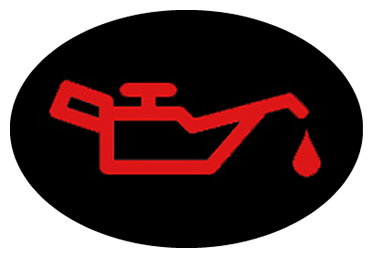
Supplemental Restraint System (Airbag)
The SRS are the systems that control the airbags. This light shouldn't come on under normal use, but it might if the fuse for the airbag is broken or if certain other conditions are met.

(Related Article: How to Reset SRS Light - Honda-Tech.com)
Check Engine Light
The check engine light is a general purpose "idiot" light. It means that there's a component or sensor in the engine that's reporting a malfunction. More details can be pulled from the engine computer with an OBD scanner.
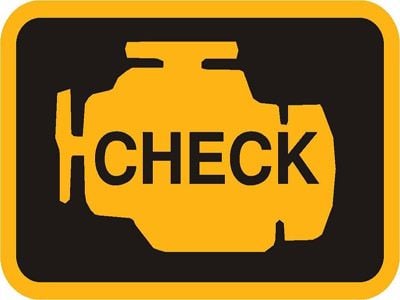
Seat Belt Reminder
This light will stay on as long as the driver's seat belt is unbuckled.
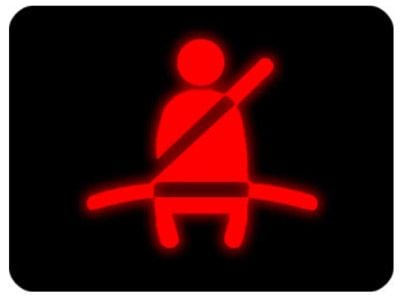
Trunk-Open Indicator
This light only comes on when the trunk is open. If the trunk is closed and secured, the switch is likely broken or the wires have been damaged. Replace as needed.
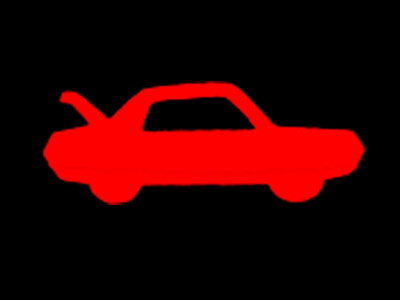
Featured Video: Honda Warning Lights
Related Discussions
- Civic Warning Lights - Honda-Tech.com
- 1999 Honda Civic Owners Manual - ManualOwl.com
- 1999 Honda Accord Owners Manual - ManualOwl.com

